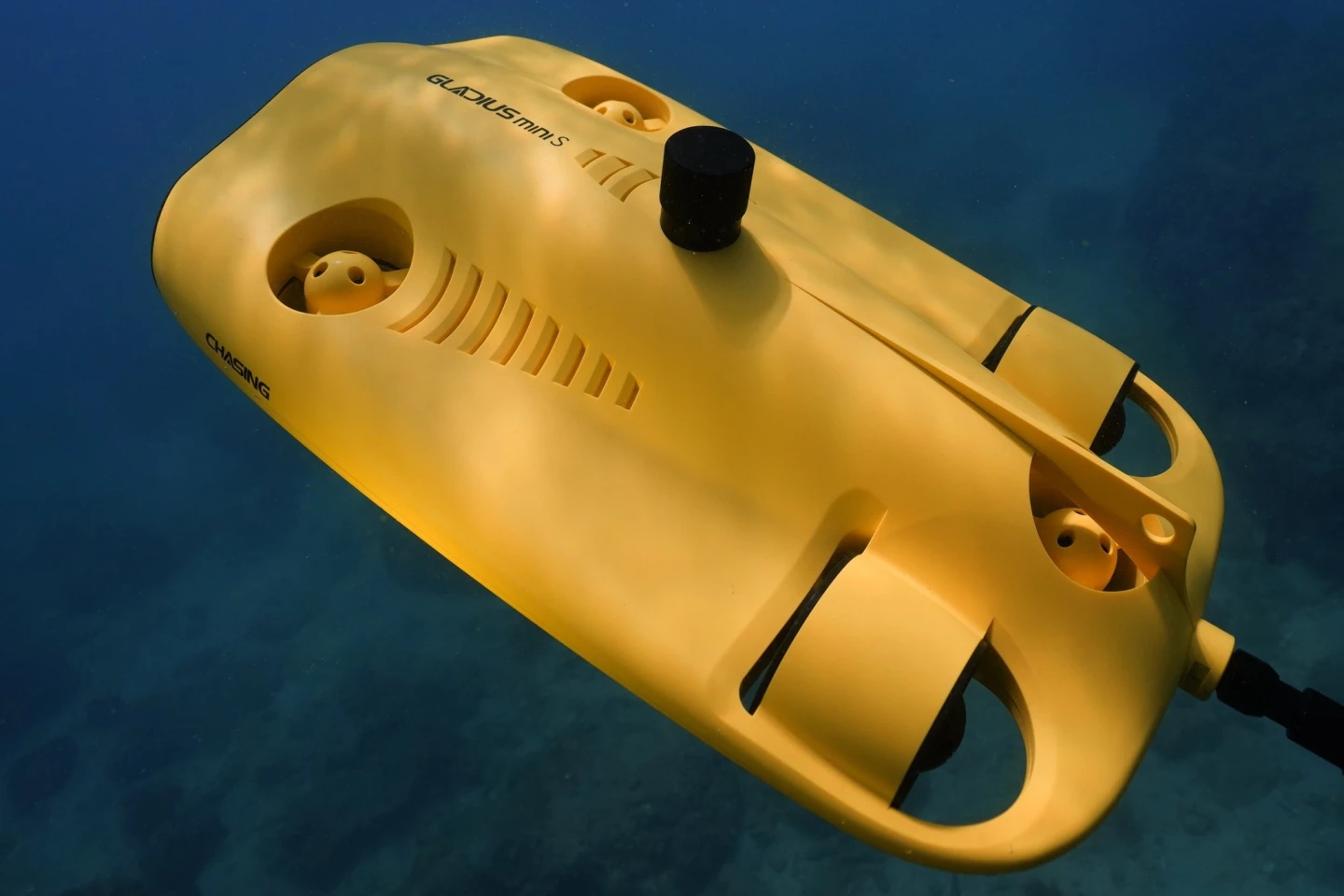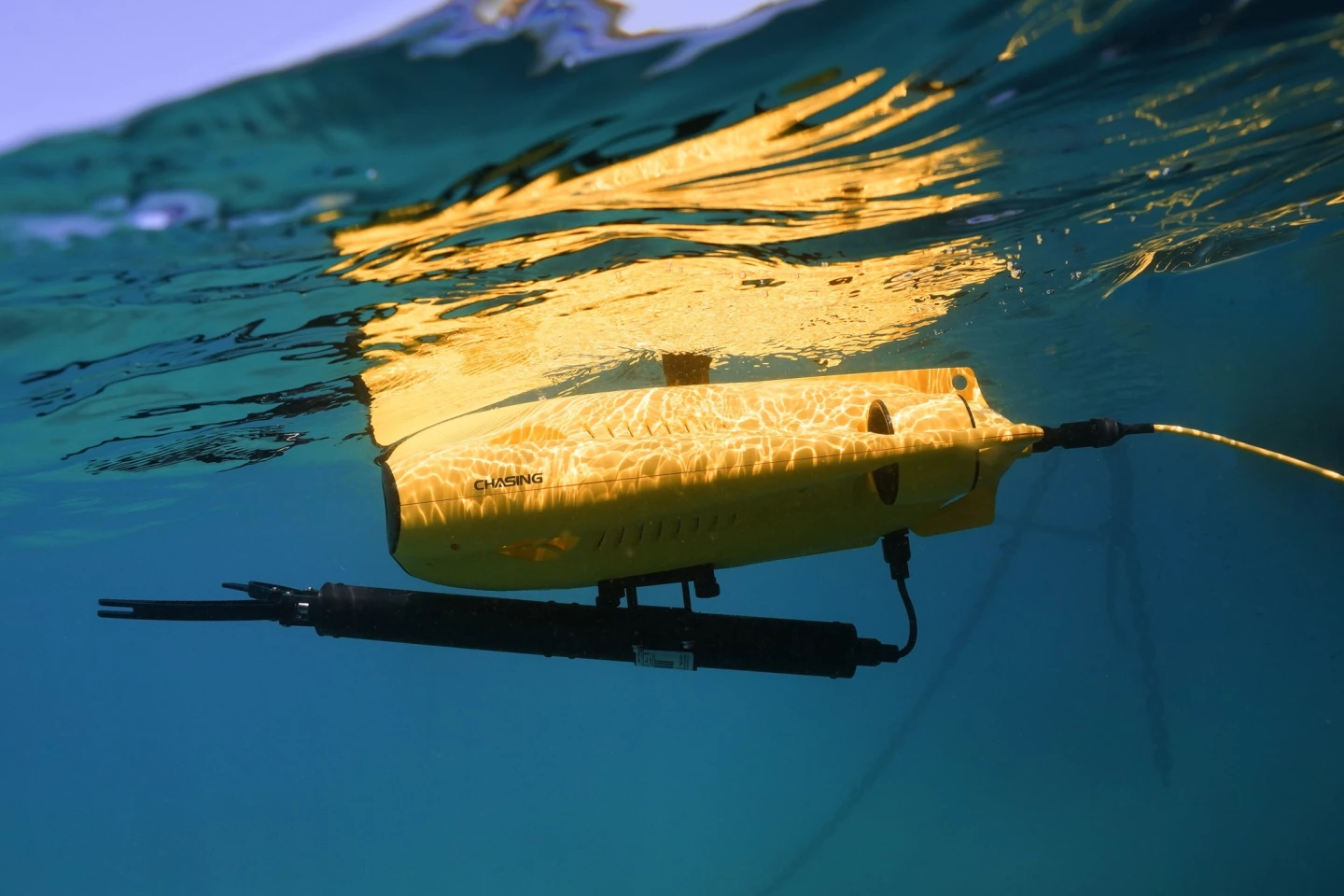Consumer drone technology is advancing by leaps and bounds, yet we mostly just hear about aerial drones. Underwater drones "are a thing" too, and I recently had a chance to try out one of the best – Chasing Innovation's Gladius Mini S.
At a glance
- Tough, solid construction
- Great 4K video
- Responsive controls
- Could do with some added protection on the front and underside
- Has some of the same drawbacks as other underwater drones
Chasing introduced its original Gladius drone back in 2017, and our own Loz Blain reviewed it the following year. The manufacturer subsequently released the smaller Gladius Mini, and phased out the original full-size model.
Like its larger predecessor, the Mini shoots 4K/30fps video and 12-megapixel stills (illuminated by dual 1,200-lumen LED spotlights), it can dive to 100 meters (328 ft), and is capable of a maximum forward speed of 4 knots (2 m/6.6 ft per second). It even improves on the original, with the ability to travel forward while locked at a tilt angle of plus or minus 45 degrees – this means it can track with a moving subject located above or below it.
Additionally, whereas the original Gladius utilized two vertical thrusters in the front and two horizontal thrusters in the rear, the Mini has an additional vertical thruster in the back – this feature is claimed to improve the drone's stability.
Like other underwater drones, it communicates with its surface-located operator via an electrical tether that runs from the drone to an included joystick remote. Users view a real-time video feed from the drone's camera via a dedicated app on their smartphone or tablet, which is mounted on the remote using an adjustable-size bracket.

On the Mini, the tether connects to a port on top of the drone. The Mini S moves that port to the rear end, which is definitely a good idea.
Having the tether attach on top leaves the connection more vulnerable to knocks against rocks, etc, plus the tether is continuously being pulled back from the port at an angle, placing it under stress. Additionally, in the event that the user has to pull the drone in by its tether (which isn't recommended, but is likely to be necessary every now and then), having that tether attach in the rear will make doing so much easier.
Other features unique to the S version include a removable-SD-card slot on top, four threaded holes on the underside for mounting a GoPro, plus four hours of runtime per charge of its two 4,800-mAh lithium batteries (the base Mini is only good for two hours).

Last but certainly not least, the Mini S is able to accommodate an optional Grabber Claw. This peripheral mounts on the underside of the drone, connected to a bottom-located electrical port. Utilizing a button on the remote (and guided by the onboard camera), operators are able to open and close the two pincers of that claw, using it to grasp and release underwater objects. My demo unit didn't come with a claw, so I wasn't able to try that feature out.
So what's the Mini S like, up close and in person?
I found the drone to be quite easy to control (once I got used to the controls, that is), and very powerful – it goes fast when you "open the throttle," and was able to fight its way upstream in a nearby river. In fact, if you don't want the thing to get away from you, you might initially want to reduce its power to less than 100 percent, via the app.

The Mini S also sports solid construction (it has a polymer-coated aluminum alloy body), excellent video quality, and it just generally looks pretty cool. It definitely got some admiration from passers-by.
As is the case with all other underwater drones, its tether does have an annoying tendency to get tangled or snagged on shoreside objects when unspooled, plus the app screen can be difficult to see in bright sunlight – an add-on shade would be a worthwhile purchase. It's also easy to lose track of which way the drone is facing relative to yourself (unless you can actually see the thing through the surface of the water), although the app does try to help by displaying a small image of the drone that shows its current orientation.
Because the Mini S is likely to be placed on rocky shores or other rough surfaces, it would be nice if it had some sort of protection on its underside (perhaps rubber skids?) to keep that part of it from getting scratched up. The port for the Grabber Claw is certainly quite exposed down there.
Likewise, some sort of protruding protective bumpers on the front end would be helpful. I must admit, the front of my demo unit did get a bit scratched up when I accidentally ran it into an underwater rock. And come to think of it, some sort of streamlined handle on top would be good, to make it easier to lift the drone out of the water.

All in all, though, I really liked the Gladius Mini S, and would certainly recommend it to someone looking for a robust but still consumer-oriented underwater drone. Pricing starts at US$1,599 for a package that includes a 100-meter (328-ft) tether – the Grabber Claw is an additional $399.
A big thank-you goes out to Gerry Yuan at eaStar Global, Chasing's Canadian distributor. He supplied me with the demo unit, plus he sells the drones, services them, operates them for clients, and will soon be using them to help conduct water conservation research.
I'd also like to thank Ryan Sokolowski, who provided me with the following footage that he shot with his Mini (which has the exact same camera as the Mini S). I did shoot a fair bit of underwater footage of my own for this review, but unfortunately the local lakes were still fairly murky due to spring runoff.
Chasing Innovation also has a promo video, which shows the Mini S in action.
Product page: Gladius Mini S










